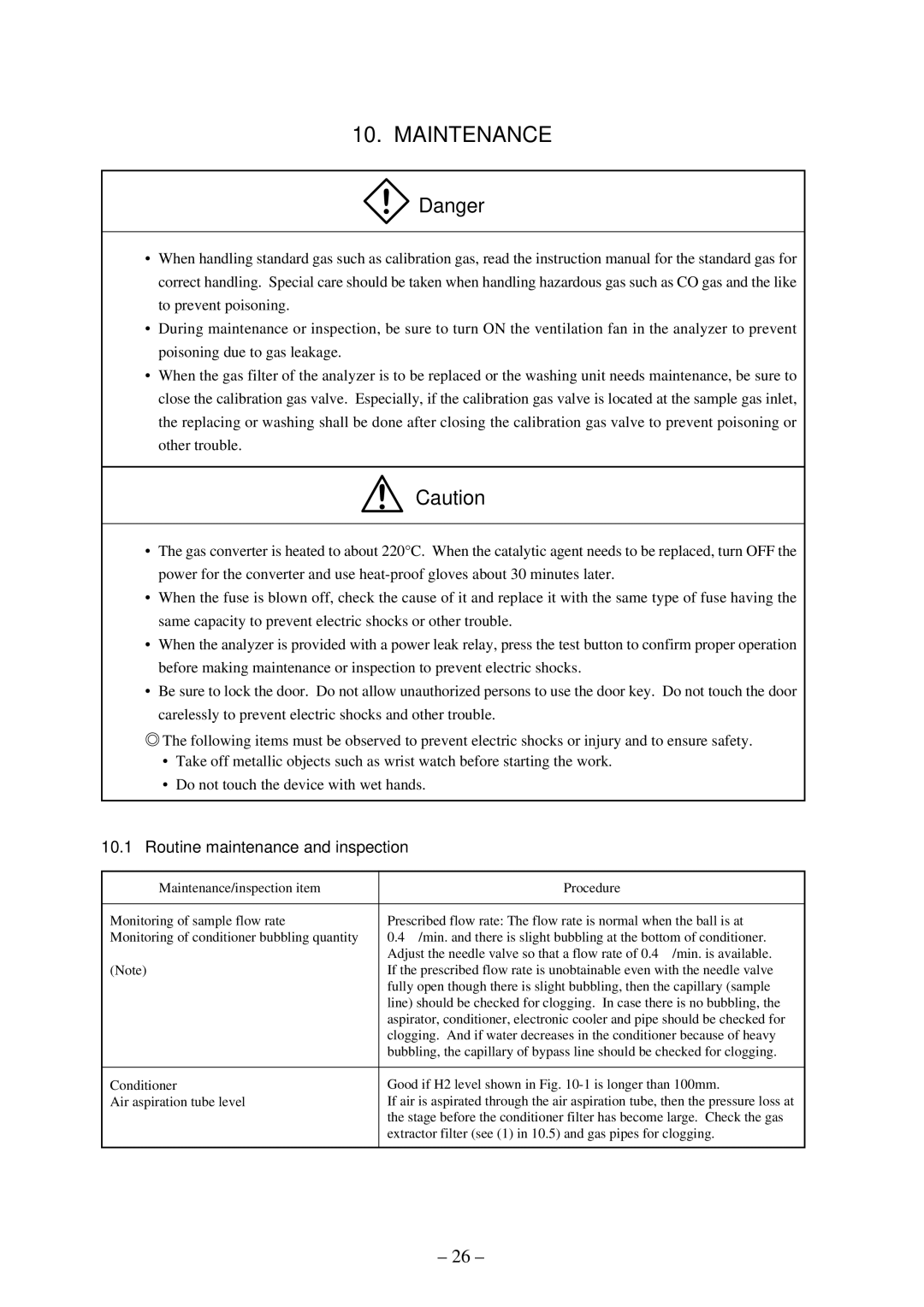
10. MAINTENANCE
![]() Danger
Danger
•When handling standard gas such as calibration gas, read the instruction manual for the standard gas for correct handling. Special care should be taken when handling hazardous gas such as CO gas and the like to prevent poisoning.
•During maintenance or inspection, be sure to turn ON the ventilation fan in the analyzer to prevent poisoning due to gas leakage.
•When the gas filter of the analyzer is to be replaced or the washing unit needs maintenance, be sure to close the calibration gas valve. Especially, if the calibration gas valve is located at the sample gas inlet, the replacing or washing shall be done after closing the calibration gas valve to prevent poisoning or other trouble.
Caution
•The gas converter is heated to about 220°C. When the catalytic agent needs to be replaced, turn OFF the power for the converter and use
•When the fuse is blown off, check the cause of it and replace it with the same type of fuse having the same capacity to prevent electric shocks or other trouble.
•When the analyzer is provided with a power leak relay, press the test button to confirm proper operation before making maintenance or inspection to prevent electric shocks.
•Be sure to lock the door. Do not allow unauthorized persons to use the door key. Do not touch the door carelessly to prevent electric shocks and other trouble.
![]() The following items must be observed to prevent electric shocks or injury and to ensure safety.
The following items must be observed to prevent electric shocks or injury and to ensure safety.
•Take off metallic objects such as wrist watch before starting the work.
•Do not touch the device with wet hands.
10.1Routine maintenance and inspection
Maintenance/inspection item | Procedure |
|
|
Monitoring of sample flow rate | Prescribed flow rate: The flow rate is normal when the ball is at |
Monitoring of conditioner bubbling quantity | 0.4N/min. and there is slight bubbling at the bottom of conditioner. |
| Adjust the needle valve so that a flow rate of 0.4N/min. is available. |
(Note) | If the prescribed flow rate is unobtainable even with the needle valve |
| fully open though there is slight bubbling, then the capillary (sample |
| line) should be checked for clogging. In case there is no bubbling, the |
| aspirator, conditioner, electronic cooler and pipe should be checked for |
| clogging. And if water decreases in the conditioner because of heavy |
| bubbling, the capillary of bypass line should be checked for clogging. |
|
|
Conditioner | Good if H2 level shown in Fig. |
Air aspiration tube level | If air is aspirated through the air aspiration tube, then the pressure loss at |
| the stage before the conditioner filter has become large. Check the gas |
| extractor filter (see (1) in 10.5) and gas pipes for clogging. |
|
|
– 26 –
